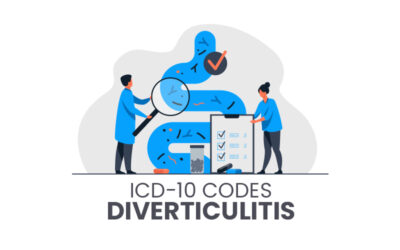Changing regulations and reimbursement methodologies such as risk-adjusted and value-based models has put the focus on risk adjustment and hierarchical condition coding or HCC coding. Risk adjustment factors are used by government and many private payers to adjust payments to health plans to reflect differences in the health risks of their enrollees. Patients with high HCCs will require more intensive medical treatment and plans that enroll these high-risk patients receive higher payments than those with enrollees who have low HCCs. As HCCs group patients into different categories based on demographics and ICD-10 codes, payments will depend on how the diagnoses are reported. Therefore proper clinical documentation is necessary to ensure accurate HCC coding and appropriate reimbursement for providers and health plans.
Under the HCC/ risk adjustment model, persons with serious or chronic illness are identified and a risk factor score is assigned to them based upon a combination of their health conditions and demographic details. Key HCC categories include: major depressive and bipolar disorders, asthma and pulmonary disease, diabetes, specified heart arrhythmias, congestive heart failure, breast and prostate cancer, rheumatoid arthritis, colorectal, breast, and kidney. Patients may be assigned to more than category as their demographic information and risk factors can combine to represent more than one kind of illness or potential for illness. By identifying patients in need of disease management, risk adjustment allows the payer to determine the annual spending per beneficiary.
The success of the risk adjustment model depends capturing the most appropriate risk score for each patient in the healthcare provider’s population. This, in turn, would require effective collaboration among medical coders, clinical documentation specialists and physicians. Clinical documentation integrity and accurate HCC coding is critical for providers who wish to expand risk capability:
- Diagnoses must be documented to the highest level of specificity
- Patient disease burden should be adequately depicted in claims and clinical data used for risk adjustment
- Claims should be accompanied by supporting clinical documentation for all reported diagnoses, also known as MEAT which expands to:
- Monitor: signs, symptoms, disease progression, disease regression
- Evaluate: Review of test results, medication effectiveness, response to treatment (“stable”, “improving”, “exacerbation”, “worsening”, “poor”)
- Assess/Address: Ordering tests, discussion, review records, counseling
- Treatment: Referral, medication(s), planned surgery, therapies, other modalities
By tracking the diagnoses for which a patient is treated, evaluated and monitored, HCCs capture risk for a patient over an entire year, across all patient settings. As HCCs generally apply to only certain patient populations, organizations need to focus on identifying those patients from the start.
An experienced medical coding service provider will work with clinical documentation specialists and physicians to ensure compliance with these complex reimbursement models. Medical coding outsourcing can also mitigate compliance risk. Mistakes in calculating patient risk scores often trigger billions of dollars in overpayments every year. The Centers for Medicare & Medicaid Services (CMS) conduct Risk Adjustment Data Validation (RADV) audits to identify overspending tied to inflated risk scores. The penalties for risk adjustment fraud can be very costly and having a team of reliable HCC coders and clinical documentation specialists can help healthcare providers prevent upcoding and other errors.




